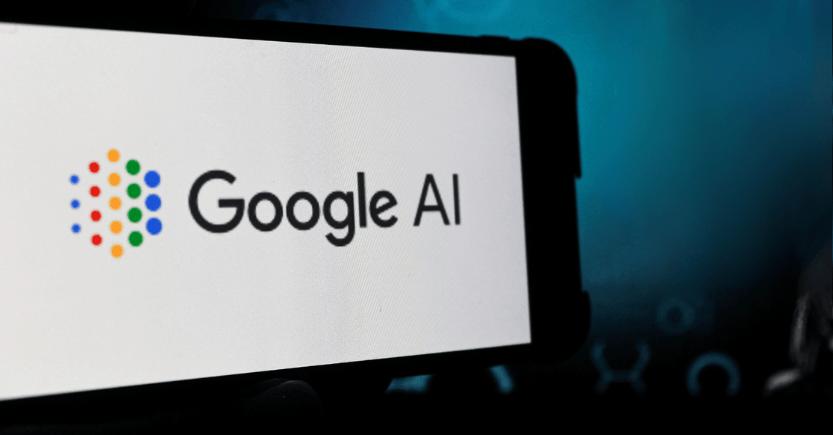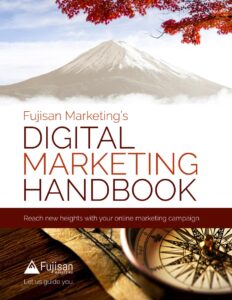First thing’s first: Unlike many AI products being rolled out recently, AI Max is an opt-in tool so you can use it or not depending on if you feel it’s right for you.
Launched in May 2025, it encompasses a range of tools based on machine learning. This includes generative AI like asset optimization, but also more traditional machine learning to optimize ads with search term matching and final URL expansion.
Theoretically the aim of these is straightforward: to improve ad relevance and expand reach.
While much of Google’s AI Max rollout can be brought back to AI-branded tools being the tech industry’s current biggest focus, their self-described rationale is about 1) recognizing that the emergence of generative machine learning platforms like ChatGPT and Perplexity has impacted people’s search behaviors, and 2) showing their own initiative to embed machine learning capabilities into their advertising ecosystem.
Admittedly, it’s worth reading Google’s communications on this topic with a relatively critical eye — particularly given that even their own rationale can mostly be translated into layman’s terms as “generative AI is our industry’s hot topic and we don’t want to look like we’re not in the game” — but that doesn’t mean you should keep yourself in the dark about this tool, what it does, and if it will be helpful for your own campaigns.

Key features of AI Max and how it differs from Performance Max
So, with that in mind, what does AI Max provide you with?
- Search term matching: expands your reach by matching ads beyond just exact keywords, and instead seeking out relevant queries using broad match or keywordless technology.
- Asset optimization: automatically generates and optimizes ad creative — headlines, descriptions, etc. — based on your associated landing pages and existing assets.
- Final URL expansion: selects the most relevant landing page on your website based on perceived user intent.
- Enhanced controls: offers brand inclusions or exclusions, plus location targeting at the ad group level to provide more precise campaign management.
As you can see, there’s a pretty broad array of uses for these different features. You probably even started to get a sense of which you feel would be helpful versus which you maybe would prefer your own, non-automated control over just reading that quick summary.
As for how it’s distinct from Performance Max, this is mainly down to campaign scope, control and transparency, and use cases.
- Campaign scope: AI Max enhances search campaigns with AI features while still maintaining keyword-based targeting, while Performance Max runs across all Google’s inventory — search, display, YouTube, Gmail — with full automation.
- Control and transparency: AI Max gives you more granular control over targeting, with accompanying clearer insights into what’s driving performance. Performance Max has less transparency and control on your end over where ads appear.
- Uses cases: To generalize, AI Max is ideal for advertisers looking to enhance existing Google Search campaigns with some machine learning features, while still essentially retaining control. Performance Max, on the other hand, is better-suited to advertisers aiming for much broader reach and scope across many channels with minimal input of your own.
Benefits, limitations, considerations, and early industry reactions
First, let’s look at the potential benefits of AI Max.
- Increased conversions: It’s relatively early days as of writing this (June 2025) so results should be taken with somewhat of a grain of salt, but early tests show about a 14% increase in conversions or conversion value, without increasing costs per click.
- Expanded reach: By expanding to relevant search queries beyond your existing keyword lists, you get access to new, potentially high-performing queries for users that wouldn’t see your ads otherwise.
- Improved ad relevance: Theoretically, the automated creative optimization should ensure ads align closely with user intent.
- Enhanced efficiency: This is really the underlying, unifying factor. AI Max can streamline your campaign management with machine learning tools handling what would otherwise be optimizations that, while routine, can be quite tedious at times and would take more of your time, energy, and human resource.
On the flip side, there are plenty of limitations here and other factors to consider:
- Potential loss of control: Over-reliance on AI may lead to less predictable ad placements, or ad placements you otherwise wouldn’t favor.
- Brand safety concerns: The automation focus might inadvertently associate your ads with unintended content.
- Added learning curve: Although it’s automated, it still is a new thing you have to learn, with tendencies you would want to monitor relatively regularly — especially early on — to make sure the AI-driven changes align with your goals and how you want to represent your brand. Essentially, this is a similar fatal flaw to much of generative AI like ChatGPT, where you have to ask yourself “Is this really more effective than just doing the task myself in the first place, if I have to constantly monitor, fact-check, or confirm the output anyway?” (All while using a boatload of extra energy to do so, but that’s a whole other conversation.)
- Data dependency: The effectiveness of a tool like this relies on both the quality and breadth of existing website content and assets available. Without that, the reliability plummets, so you have to consider how you want to rely on these factors.
With all this in mind, we’re starting to get a clearer look at the reception AI Max is getting as some common industry thoughts start to take shape.
So far, it’s mixed. There are some brands — L’Oréal is maybe the biggest example — who have reported pretty noteworthy improvements in conversion rates. In general, though, the forming consensus seems to be that, while some appreciate being able to outsource certain tasks to automation, many have expressed concerns over giving up your own control plus the lack of transparency behind it.
The latter especially prevents you from getting as good of a read on the “how” and “why” behind your results, meaning that you haven’t just automated your present ads — which could potentially be a win in the moment! — but you’re potentially hamstringing your future improvement to do so.
Is AI Max something you should try?
There are some who will be better-suited to trying out AI Max early on now than others.
For example, if you’re a business or advertiser who has well-structured Google Search campaigns already up and running and are looking to see if you can build on that, it might be worth giving AI Max a shot. Similarly, you might want to test it out if you’re a business looking to expand your reach without overhauling your existing campaign structures.
Alternatively, it might be beneficial if you’re a marketer who isn’t overly risk-averse and are comfortable testing out a new technology while knowing you could end up with some sunk cost if it doesn’t work out. Depending on the current infrastructure of your existing campaigns, this could be a bigger risk, but you could find ways to stay ahead of the curve in the process.
Lastly, if your business has robust content on your website, that will help facilitate effective AI-driven asset and URL optimization with a much lower risk than if your site doesn’t have that. If you find that describes your business, then AI Max could be helpful.
Fujisan’s own two cents on AI Max
Now that you’ve read this whole rundown, our thoughts:
Basically, we’re taking a pretty even-keeled approach to our assessment of AI Max for Search. We aren’t going to tell you to drop everything and automate it all; we’re not going to tell you to never touch it — we think of it as another tool in your arsenal with which you can potentially enhance your campaign performance but which you should apply with purpose, not just because “well, everyone’s using AI tools these days!”
Like with any tool, if you can’t articulate why you’re using it, it’s worth reconsidering if you should use it at all.
We recommend being pretty measured about AI Max: Start with select campaigns where you feel it can best be applied, monitor your outcomes, and scale your usage up or down depending on how it performs.
And of course, if you ever need any help, our Fujisan team is always ready to assist new clients — whether in integrating new tools like this or for any other digital marketing goals!




